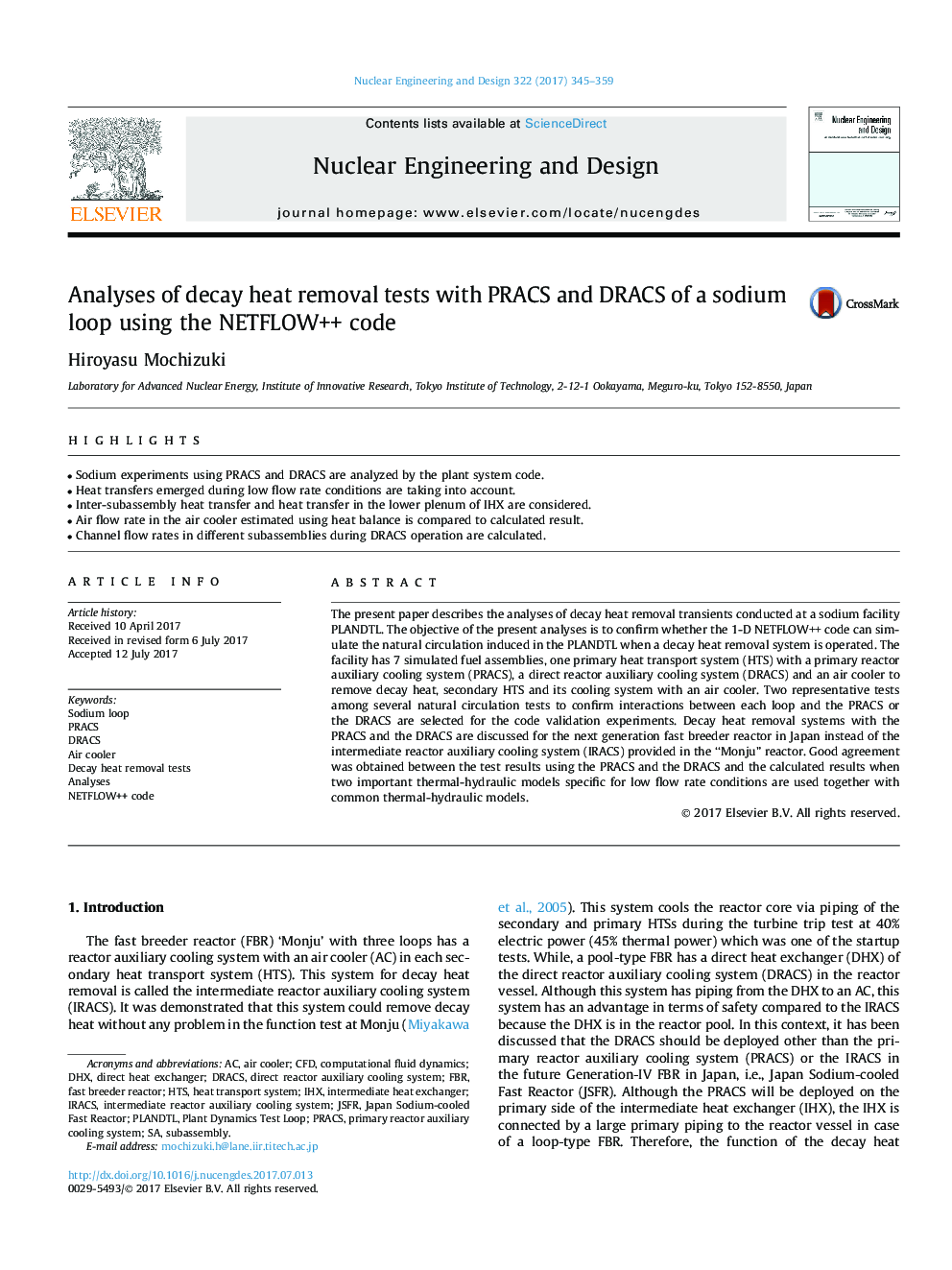| Article ID | Journal | Published Year | Pages | File Type |
|---|---|---|---|---|
| 4925309 | Nuclear Engineering and Design | 2017 | 15 Pages |
Abstract
The present paper describes the analyses of decay heat removal transients conducted at a sodium facility PLANDTL. The objective of the present analyses is to confirm whether the 1-D NETFLOW++ code can simulate the natural circulation induced in the PLANDTL when a decay heat removal system is operated. The facility has 7 simulated fuel assemblies, one primary heat transport system (HTS) with a primary reactor auxiliary cooling system (PRACS), a direct reactor auxiliary cooling system (DRACS) and an air cooler to remove decay heat, secondary HTS and its cooling system with an air cooler. Two representative tests among several natural circulation tests to confirm interactions between each loop and the PRACS or the DRACS are selected for the code validation experiments. Decay heat removal systems with the PRACS and the DRACS are discussed for the next generation fast breeder reactor in Japan instead of the intermediate reactor auxiliary cooling system (IRACS) provided in the “Monju” reactor. Good agreement was obtained between the test results using the PRACS and the DRACS and the calculated results when two important thermal-hydraulic models specific for low flow rate conditions are used together with common thermal-hydraulic models.
Keywords
Related Topics
Physical Sciences and Engineering
Energy
Energy Engineering and Power Technology
Authors
Hiroyasu Mochizuki,
